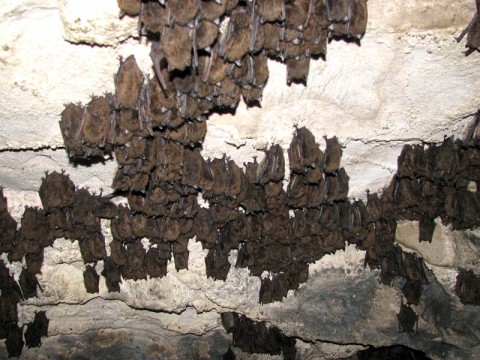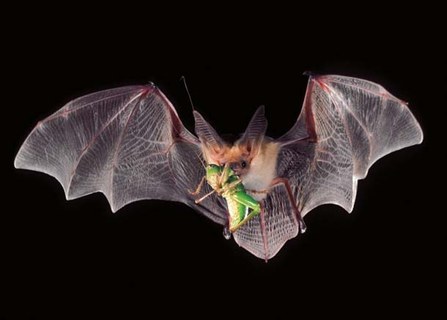Bat Myths
- Bats are very dirty and spread rabies.
- Bats swoop down and get tangled in peoples hair
- Bats bite people's necks and suck their blood
- Bat are ferocious and scary animals
The Truth About Bats
Benefits
- Bats are the only major predator of night flying insects, therefore they control the insect population that carries disease and destroys our crops and gardens.
- Bats can consume about 500 insects per hour ( that's about 3000 insects in a single night!).
- Fruit-eating bats are important for dispersing seeds and pollinating tropical and sub-tropical trees and shrubs.
- Bat droppings, called guano, are rich in nitrogen and can be used as fertilizers.
Echolocation: A Bat's Eyes and Ears
- Bats use a sonar system called echolocation to maneuver around and locate their prey. They do this by opening their mouths and emitting high-pitched (ultrasonic) sound pulses. The sound waves bounce off of objects and back to the bats ears to tell them the size, shape, and location of nearby objects, including moving prey.
For more information on bat houses click the link below!
All information is credited to PPL Wallenpaupack Environmental Learning Center
Location |
|

